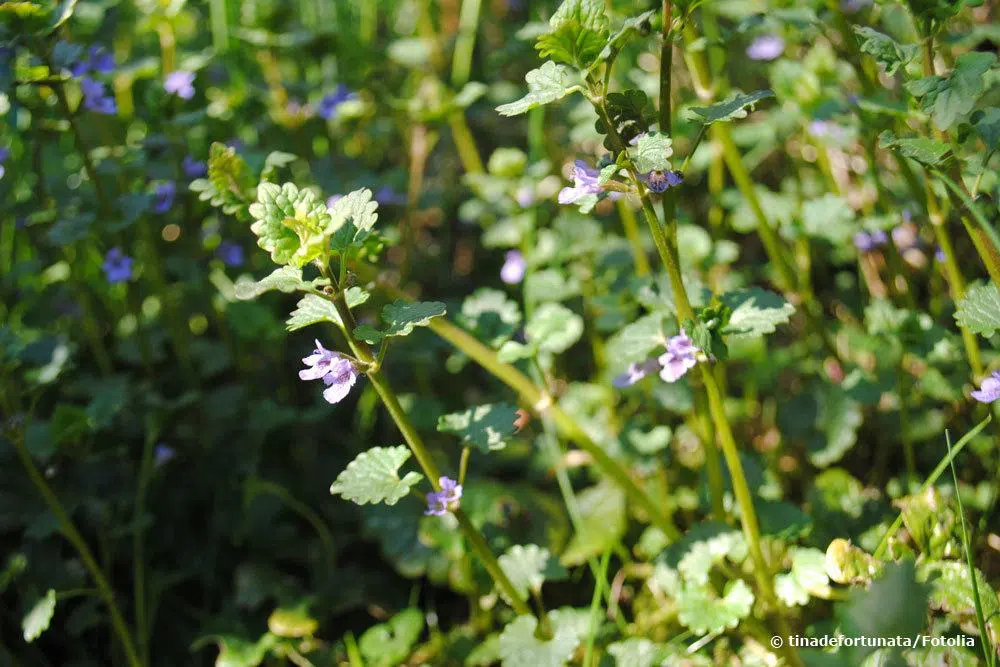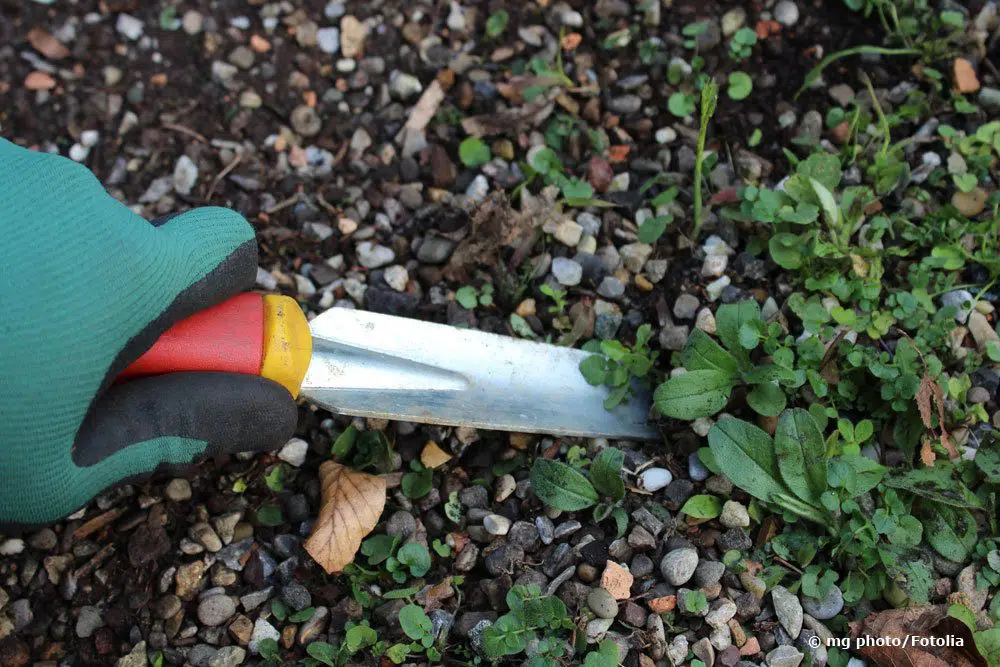Last updated on October 23rd, 2023 at 08:32 pm
Gundweed, also known as groundsel, is a stubborn herb that can spread rapidly within a short period of time and severely affect the lawn. It is therefore necessary to control Glechoma hederacea to stop the spread of the plant with the blue-purple flowers, as it can damage pools, ponds and patios due to its nodal roots. Often the question arises: is it recommended to scarify in the event of an infestation of groundsel?
Contents
Prevention
Because of its extensive growth, true gundel vine is effective at sweeping through any lawn. While the flowers are not unsightly and the plant is even edible, the infestation causes the following problems for grasses and low plants:
- Lack of light
- Lack of nutrients
- lack of water
- higher susceptibility to fungus
- higher susceptibility to bacteria

Especially in well-maintained lawns with little to no wild growth, the flowers and leaves of the earth ivy are very noticeable. Combating this labiates is extremely difficult, as it self-seeds very quickly and thus gets out of control within a short time. The following points will help you to consistently avoid an infestation by the true ground ivy:
Measures
- mowing
You should mow your lawn regularly to keep the length of the grasses at a height between 4 cm to 5 cm. This will prevent the tansy seeds from receiving enough light to germinate. While the seeds are dark germinators, they do need some light, which they are denied by mowing as long as you don’t cut too short. Since mowing makes the lawn stronger and grows denser, the plant can’t establish as easily. In addition, mowing the lawn reduces nitrogen levels in the soil, which must be quite high for ground ivy.
- remove lawn clippings
After you have mowed, you should remove all lawn clippings as thoroughly as possible. Lawn clippings have the effect of allowing nitrogen to accumulate in the soil, again providing ideal conditions for Creeping Ivy to establish. Moist lawn clippings in particular should be removed as soon as possible.
- control
Check your lawn at regular intervals to use immediate countermeasures at the first sign of the plant. You can recognize the Gundermann immediately by the two cotyledons, which stand out strongly from the lawn. If you proceed thoroughly in this regard, you can save yourself a lot of work afterwards.
Preventive measures are not always successful, especially if there are many specimens in other gardens or nearby and the seeds are carried into your garden via the wind. Above all, the formation of nodal roots must be prevented, as this is where the plant spreads, making it difficult to control efficiently.
Tip: Despite the nickname “creeping ivy”, ground ivy is not a poisonous plant. The flowers of the herb were used in the Middle Ages as a substitute for pepper, while the leaves can be eaten raw in salads or just like that without any problems, as they contain numerous flavonoids, essential oils and pectins together with the flowers.
Combat
Methods
If you want to combat an acute infestation of gunderbug, or prevention has not worked, you need to be even more active against the stubborn plant. Be aware, however, that the “fight” against Glechoma hederacea can be costly and exhausting. It is especially important to get the plants out of the ground early enough, because in the young state the root system is only slightly developed. That is, you can start as early as March, before the flower appears. You have the following three methods to choose from:
By hand.
Put on a sturdy pair of gardening gloves and start plucking the plants out of the ground one by one. As you do this, take your cue from the adult specimens, which are clearly visible because of their size. Depending on the degree to which they have spread so far, you may find yourself following a plant up to two feet across the lawn, as the runners and roots can reach such an extent. You will need to be extremely thorough here in order to combat the ground ivy. This job gets done especially well in a group.
Weed trimmer
Weed pruners work wonders against gundewort, as it is a shallow rooter. Here, you simply check the lawn for the plants, apply the tool and pull the weeds out of the ground with one tug. This method is especially gentle on your back, as you don’t have to move across the lawn in a stooped position and repeatedly pull the soil ivy out of the ground by sheer muscle power.

Weedkiller
This option is particularly simple, because you hardly need to do yourself. However, you should make sure that you choose the right product. To combat true gundel vine, choose a weed killer that specializes in dicotyledonous plants. When using it, it is best to follow the manufacturer’s instructions, but the following points may help you apply it:
- always apply at least one meter away from beds
- do not keep the lawn too wet, so that the weed killer cannot spread any further
- distribute evenly to really get all the runners.
About two months later you should reseed the lawn. Not sooner, as the killer will remain in the soil for that period.
Fertilize & Dispose
In addition to the above methods, you should fertilize in a specific way to lower the nitrogen content of the soil, making it even more effective at controlling tundra. While your lawn will lose some of its color, this is not a big deal because the ground ivy will die as a result of this measure. A well-maintained lawn is resistant enough to make up for the lack of nutrients, but the ground ivy is not. The following instructions will help them do just that:
- stop normal fertilizer additions
- do not fertilize until ground ivy is dead
- then use fast-acting nitrogen fertilizers
- urea, ammonium or nitrate are well suited
- alternatively administer small amounts of natural fertilizer
Last but not least, do not immediately dispose of the plants you have pulled out of the ground in the compost. The reason for this is the seeds, because even now they can get up and go and thereby ruin all your work. As long as the uprooted specimens have moisture available, the seeds do not dry up and can be carried away by the wind. Therefore, to fight the plants for a long time, you should put them on the terrace or stone slabs to dry. This will give them the rest.
Tip: There are numerous products on the market that are supposed to help specifically against ground ivy. However, the results are not really satisfactory and can harm the lawn even more in the long run.
To scarify or not?
Scarifying the lawn when it is infested with ground ivy is not recommended, as compacted soil provides better protection against the plant. However, compacted soil is not guaranteed to prevent creeping ivy infestations, as the roots and shoots are robust and vigorous. Nevertheless, dethatching can help against creeping ivy, which is explained via the following points:
- compacted soil degrades lawn quality. Poor lawn quality leads to the fact that the lawn is more vulnerable and thinning. The tansy seeds are just waiting for such conditions, as it gives them less competition to germinate.
- compacted soil provides ideal conditions for the establishment of weeds. These weeds, in turn, can be infected by the fungi and bacteria of tansy, which can be quite detrimental to your lawn.
- dethatching does loosen the soil, but it allows you to remove already developed roots and stolons. This means that when you work on the lawn with the scarifier, you can immediately see where the plant has settled and systematically remove it.
After scarifying, it is worth spreading enough lawn seed to keep the lawn dense and healthy. Only the compacted areas of the lawn should be scarified, as these are particularly susceptible to weeds and diseases. It is best to dethatch twice throughout the season and then distribute new seed. The healthier your lawn is, the denser it will be, making it difficult for tundra seeds to take root. However, you should not use the dethatcher if you do not seed afterward, as you will make it easier for true gundel vine to germinate in your yard.


